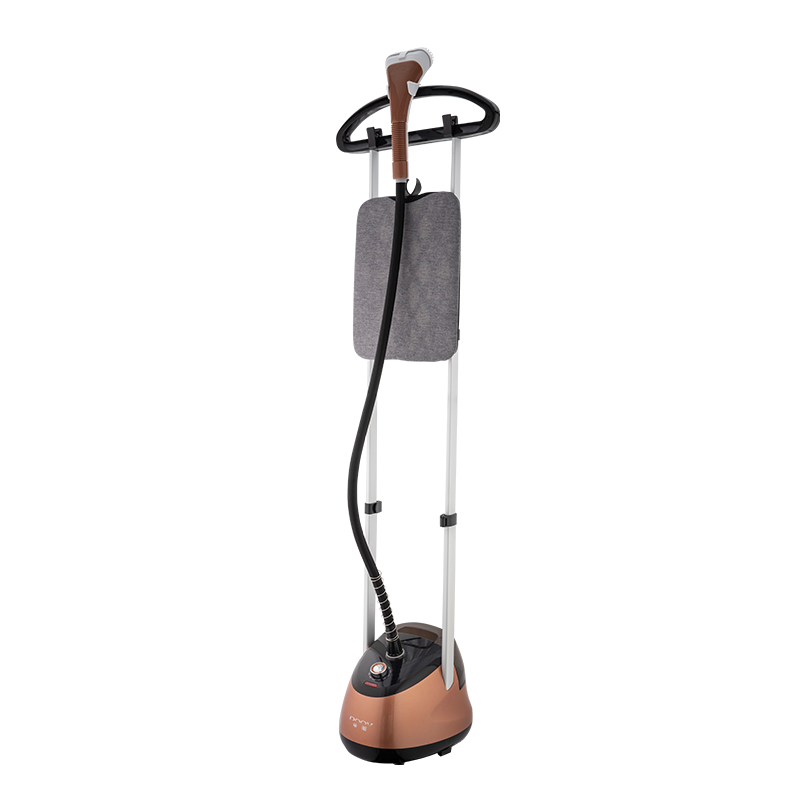How Does a High-Quality Ironing Machine Elevate Fabric Care Efficiency?
2025-08-11
In the realm of household chores and professional garment care, efficiency and precision are paramount. Ironing machines have evolved far beyond basic irons, emerging as powerful tools that streamline the process of achieving crisp, wrinkle-free fabrics. Whether for busy households juggling multiple tasks or commercial laundries handling large volumes of linens, a high-quality ironing machine transforms a tedious chore into a quick, reliable routine. As consumers and businesses alike seek ways to save time without compromising on results, understanding how these machines deliver superior performance is essential. This guide explores the mechanics behind ironing machines, their key features, detailed specifications of our top models, and answers to common questions to highlight their role in enhancing fabric care efficiency.
Trending News Headlines: Top Searches on Ironing Machines
- "Commercial Ironing Machines: Reducing Laundry Time by 50%"
- "Smart Ironing Machines with Automatic Fabric Detection"
How Ironing Machines Revolutionize Fabric Care
Automated Pressing for Uniform Results
Unlike manual irons, which rely on the user’s pressure and technique, ironing machines use mechanical pressing systems to apply consistent heat and pressure across the fabric. This automation eliminates human error, ensuring every part of a garment or linen receives the same treatment—no more uneven creases or missed wrinkles. For example, a shirt ironed by machine will have perfectly crisp collars and cuffs, while a bed sheet will lie flat without the wavy edges that often result from manual ironing. This uniformity is especially valuable for commercial settings like hotels or restaurants, where a polished appearance is critical for customer satisfaction.
Speed and Capacity for High-Volume Use
Ironing machines are designed to handle more fabric in less time. Commercial models, in particular, can process multiple items per minute, significantly reducing the time spent on laundry. Even household models outpace traditional irons, with features like large ironing surfaces and continuous steam output that allow users to tackle bulky items (such as curtains or tablecloths) in a fraction of the time. For busy parents or professionals, this means completing ironing tasks in minutes rather than hours, freeing up time for other priorities.
Adaptability to Different Fabrics
Modern ironing machines come equipped with advanced fabric detection technology or adjustable settings that cater to a wide range of materials. From delicate silk to heavy denim, users can select the optimal temperature, steam level, and pressure to avoid damage while achieving a flawless finish. Some machines even automatically adjust these settings based on the fabric type, eliminating the need for guesswork. This versatility ensures that all garments and linens—regardless of material—receive the care they need, extending their lifespan and maintaining their appearance.
Reduced Physical Effort and Fatigue
Manual ironing requires constant movement, pressure, and bending, which can lead to muscle strain and fatigue over time. Ironing machines minimize physical effort by automating the pressing process. Users simply position the fabric, and the machine handles the rest—no need to apply force or maintain awkward postures. This is particularly beneficial for individuals with mobility issues or for commercial workers who spend hours ironing daily, reducing the risk of workplace injuries and improving overall productivity.
Integration with Smart Technology
Many modern ironing machines feature smart capabilities that enhance convenience. Wi-Fi connectivity allows users to control the machine via smartphone apps, enabling them to start a cycle remotely or receive alerts when a load is complete. Some models also include sensors that detect fabric thickness or moisture levels, adjusting settings in real time to optimize results. For example, a smart ironing machine might increase steam output for a damp towel or lower the temperature for a delicate blouse, ensuring efficient, safe operation without manual intervention.
Key Features to Look for in an Ironing Machine
Heating Element and Temperature Range
The heating element determines how quickly the machine reaches operating temperature and how evenly it distributes heat. Look for machines with stainless steel or ceramic heating plates, which heat up faster and retain heat more consistently than traditional materials. A wide temperature range (from 100°C for delicate fabrics to 220°C for heavy-duty materials) ensures the machine can handle diverse fabrics, from silk to linen.
Steam Output and Pressure
Steam is essential for relaxing fabric fibers and removing tough wrinkles. High steam output (measured in grams per minute) and pressure (in bars) ensure effective penetration, even for thick or heavily wrinkled fabrics. For household use, a steam output of 30-50 g/min is sufficient, while commercial models should offer 80+ g/min for high-volume tasks. Adjustable steam settings allow users to customize the amount of steam based on the fabric type.
Ironing Surface and Capacity
The size of the ironing surface determines how much fabric can be processed at once. Household machines typically have surfaces ranging from 30x40 cm to 50x70 cm, while commercial models may be larger (up to 100x150 cm) to accommodate sheets and tablecloths. Some machines also feature expandable surfaces or rotating plates to handle oversized items with ease. For commercial use, consider the machine’s hourly capacity (measured in kilograms or number of items) to ensure it meets your volume needs.
Automation and Smart Features
Automation features like automatic fabric detection, self-cleaning systems, and programmable cycles simplify operation and reduce the risk of errors. Smart features such as app control, voice commands, or integration with home automation systems add convenience, allowing users to monitor and adjust the machine from anywhere. For commercial settings, features like batch processing or energy-saving modes can further enhance efficiency.
Safety Mechanisms
Safety is critical when working with high heat and steam. Look for machines with features like automatic shut-off (if left unused for a period), overheat protection, and cool-touch handles or surfaces to prevent burns. Commercial models may also include emergency stop buttons and child locks for added safety in busy environments.
Our Ironing Machine Specifications
|
Feature
|
Household Ironing Machine (MY-H200)
|
Commercial Ironing Machine (MY-C500)
|
Smart Ironing Machine (MY-S300)
|
|
Heating Element
|
Ceramic plate
|
Stainless steel dual plates
|
Ceramic-coated aluminum plate
|
|
Temperature Range
|
100°C - 200°C
|
120°C - 220°C
|
80°C - 220°C (automatic detection)
|
|
Steam Output
|
40 g/min
|
100 g/min
|
50 g/min (adjustable)
|
|
Steam Pressure
|
0.5 bar
|
1.2 bar
|
0.8 bar
|
|
Ironing Surface
|
40x50 cm
|
80x100 cm
|
45x60 cm
|
|
Capacity (per hour)
|
5-8 kg
|
30-40 kg
|
8-12 kg
|
|
Power Consumption
|
1800W
|
3000W
|
2200W
|
|
Water Tank Capacity
|
1.2 L
|
3.5 L
|
1.5 L (with auto-refill option)
|
|
Automation Features
|
3 fabric presets (cotton, silk, wool)
|
5 programmable cycles, batch processing
|
Automatic fabric detection, self-cleaning
|
|
Smart Features
|
N/A
|
N/A
|
Wi-Fi connectivity, app control, voice commands
|
|
Safety Features
|
Auto shut-off (30 min idle), overheat protection
|
Emergency stop, auto shut-off, cool-touch panels
|
Auto shut-off (15 min idle), child lock, leak protection
|
|
Dimensions
|
55x45x30 cm
|
120x80x60 cm
|
60x50x35 cm
|
|
Weight
|
8 kg
|
35 kg
|
10 kg
|
|
Warranty
|
2 years
|
3 years
|
2 years
|
All our ironing machines undergo rigorous testing to ensure durability, safety, and performance. We use high-quality materials in construction, from heat-resistant plastics to corrosion-resistant metal components, ensuring long-lasting reliability even with frequent use.
FAQ: Common Questions About Ironing Machines



